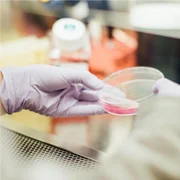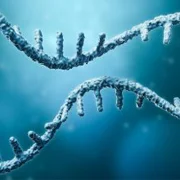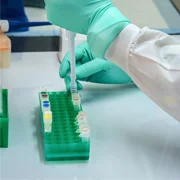Technical Support
[email protected]
Hot Products
- In-Stock Tumor Cell Lines
- Human Orbital Fibroblasts
- Human Microglia
- Human Pulmonary Alveolar Epithelial Cells
- Human Colonic Fibroblasts
- Human Type II Alveolar Epithelial Cells
- Human Valvular Interstitial Cells
- Human Thyroid Epithelial Cells
- C57BL/6 Mouse Dermal Fibroblasts
- Human Alveolar Macrophages
- Human Dermal Fibroblasts, Adult
- Human Lung Fibroblasts, Adult
- Human Retinal Muller Cells
- Human Articular Chondrocytes
- Human Retinal Pigment Epithelial Cells
- Human Pancreatic Islets of Langerhans Cells
- Human Kidney Podocyte Cells
- Human Renal Proximal Tubule Cells
-
How is KHYG-1 quality controlled?
KHYG-1 is prepared by professional operators, and every lot of KHYG-1 is tested with a comprehensive quality assurance system to satisfy customers with our good services based on the tests of sterility, viability of post-thaw, growth state, STR, and flow cytometry analysis.
-
Which antibiotic is the NK-92MI (STAT3) Luciferase Reporter Cell Line resistant to?
These cells are resistant to puromycin.
-
What vector was used to construct the K562 (NFkB) Luciferase Reporter Cell Line?
This product was constructed using a lentiviral vector.This product was constructed using a lentiviral vector.
-
What puromycin concentration should be used for RM-1 Luciferase Reporter Cell Line?
A concentration of 2.0 µg/mL puromycin can be used, but the optimal concentration should be determined experimentally.
-
How is the Human USH2A knockout cell line generated?
This product is generated using a fragment deletion strategy, but a frameshift mutation approach can also be provided upon customer’ s request.
-
How is quality control performed for immortalized cell lines?
After immortalization, AcceGen verifies vWF expression and checks cell morphology.
-
What dissociation reagent should I use to detach the cells?
For Reprogrammed Human iPS Cell , Accutase is the recommended dissociation reagent.
-
What type of FBS should I purchase for this product?
We recommend purchasing ready-to-use FBS, which should be filtered and sterilized using a 0.22 µm membrane before use.
-
What should be done with the receiving cells?
Immediately after receiving the package, transfer the cryopreserved cells from the dry ice shipping container to liquid nitrogen to prevent the cells from thawing. Do NOT store cells at -20 ℃ or -80 ℃.
-
How do I recover cryopreserved cells?
1. Remove a vial of cells from liquid nitrogen, taking care to protect your hands and eyes.
2. Loosen the cap on the vial for 1/4 second to release the liquid nitrogen that may be trapped in the threads, then re-tighten the cap.
3. Place the frozen vial in a 37 ℃ water bath. Gently hold and rotate the vial until the contents are completely melted. The vial was immediately removed from the water bath, wiped clean with 70% ethanol, and then transferred to a sterile area.
4. Carefully remove the cover without touching the internal threads. Gently resuspend the contents of the vial and dispense into a balanced poly-L-lysine or fibronectin-coated culture vessel containing the culture medium (see specific instructions listed on the product table).
5. Close the lid or lid of the culture dish and gently shake the culture dish to evenly distribute the cells. If necessary, loosen the cover for gas exchange.
6. Return the petri dish to the incubator (37 ℃, 5% CO2 / 95% air).
For best results, do NOT disturb the culture for at least 16 hours after starting the culture. The medium was renewed the next day to remove residual DMSO and unattached cells (unless stated otherwise on the product table).
Note: For detailed instructions, see the cell manual.


